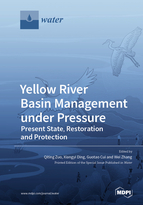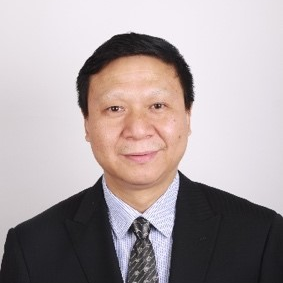Yellow River Basin Management under Pressure: Present State, Restoration and Protection
A special issue of Water (ISSN 2073-4441). This special issue belongs to the section "Water Resources Management, Policy and Governance".
Deadline for manuscript submissions: closed (30 July 2022) | Viewed by 37037
Special Issue Editors
Interests: human–water harmony; climate change adaptation; integrated water resource management; interconnected river system network; high-quality development for Yellow River; water environment protection
Special Issues, Collections and Topics in MDPI journals
Interests: urban hydrology; urban flood prevention; hydrological cycle simulation; climate change; safety and security of water resources
Special Issues, Collections and Topics in MDPI journals
Interests: water management; mountain hydrology; vadose zone; hydrologic modeling; snow
Special Issues, Collections and Topics in MDPI journals
Interests: Yellow River environment; emerging pollutant; sediment; microplastics; pollutant control
Special Issues, Collections and Topics in MDPI journals
Special Issue Information
Dear Colleagues,
Ecological protection and high-quality development in the basin of the Yellow River, which is known as China's "Mother River" and "the cradle of Chinese civilization", have been receiving increasing attention because they play an important role in China's economic and social development and its cultural heritage. Under ongoing climate change and intense human activities, the Yellow River basin is facing crucial challenges, e.g., flooding, water security, water resources shortage, water pollution, and ecological environment degradation, which seriously affect the sustainable development of regional economy and society. Meanwhile, significant differences in key characteristics across the upper, middle, and lower reaches call for joint management efforts, including integrated management, water conservancy, and ecological environment restoration. This Special Issue focuses on the current state, challenges, and suggestions relating to Yellow River basin management and sustainable development under pressure, aiming to help improve ecological protection and achieve high-quality development. We invite submissions in, but not limited to, the following topics:
- Current state and characteristics of Yellow River basin management;
- Opportunities, challenges, and countermeasures of Yellow River management;
- Influence of changing environment on the characteristic of Yellow River;
- Impacts of changing environment on water security and water resources shortage;
- Restoration and protection in the Yellow River basin under pressure;
- Harmonious regulation of human–water relationship;
- Integrated management under changing environment.
Prof. Dr. Qiting Zuo
Prof. Dr. Xiangyi Ding
Dr. Guotao Cui
Dr. Wei Zhang
Guest Editors
Manuscript Submission Information
Manuscripts should be submitted online at www.mdpi.com by registering and logging in to this website. Once you are registered, click here to go to the submission form. Manuscripts can be submitted until the deadline. All submissions that pass pre-check are peer-reviewed. Accepted papers will be published continuously in the journal (as soon as accepted) and will be listed together on the special issue website. Research articles, review articles as well as short communications are invited. For planned papers, a title and short abstract (about 100 words) can be sent to the Editorial Office for announcement on this website.
Submitted manuscripts should not have been published previously, nor be under consideration for publication elsewhere (except conference proceedings papers). All manuscripts are thoroughly refereed through a single-blind peer-review process. A guide for authors and other relevant information for submission of manuscripts is available on the Instructions for Authors page. Water is an international peer-reviewed open access semimonthly journal published by MDPI.
Please visit the Instructions for Authors page before submitting a manuscript. The Article Processing Charge (APC) for publication in this open access journal is 2600 CHF (Swiss Francs). Submitted papers should be well formatted and use good English. Authors may use MDPI's English editing service prior to publication or during author revisions.
Keywords
- Yellow River basin
- current state and challenges
- changing environment and pressure
- ecological environment restoration and protection
- water security
- water saving
- water management
- human–water harmony
- high-quality development
- systematic management measures









